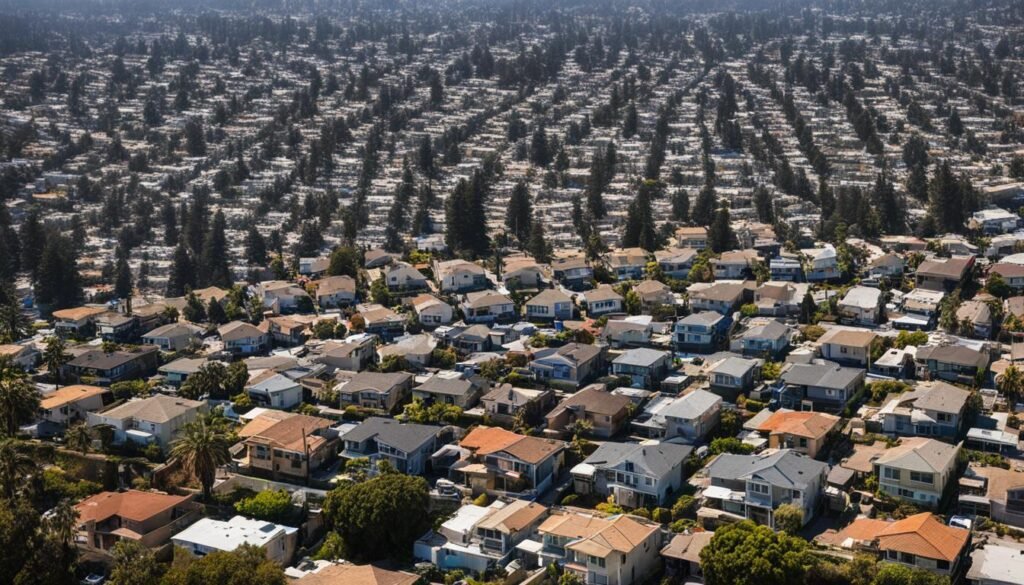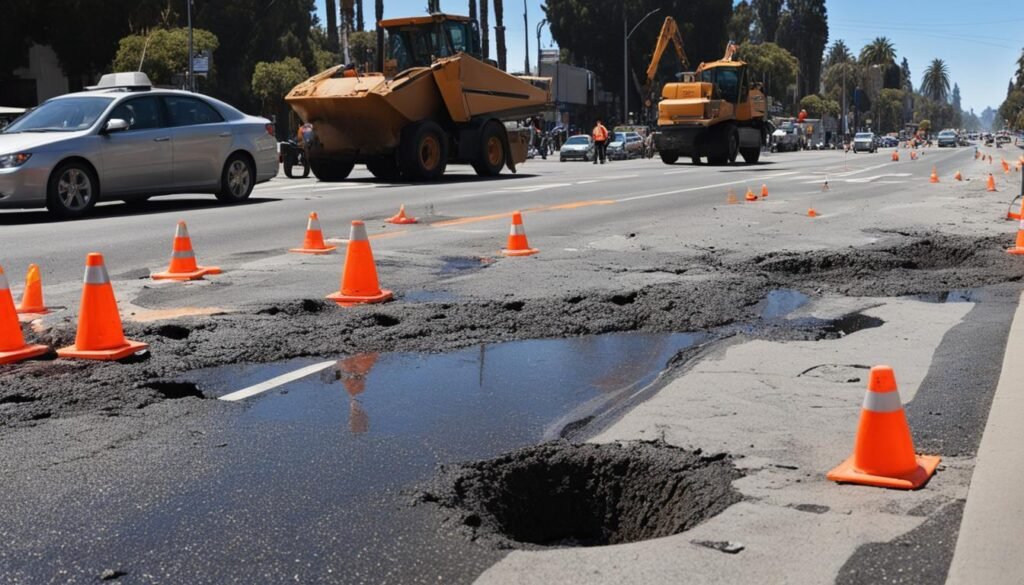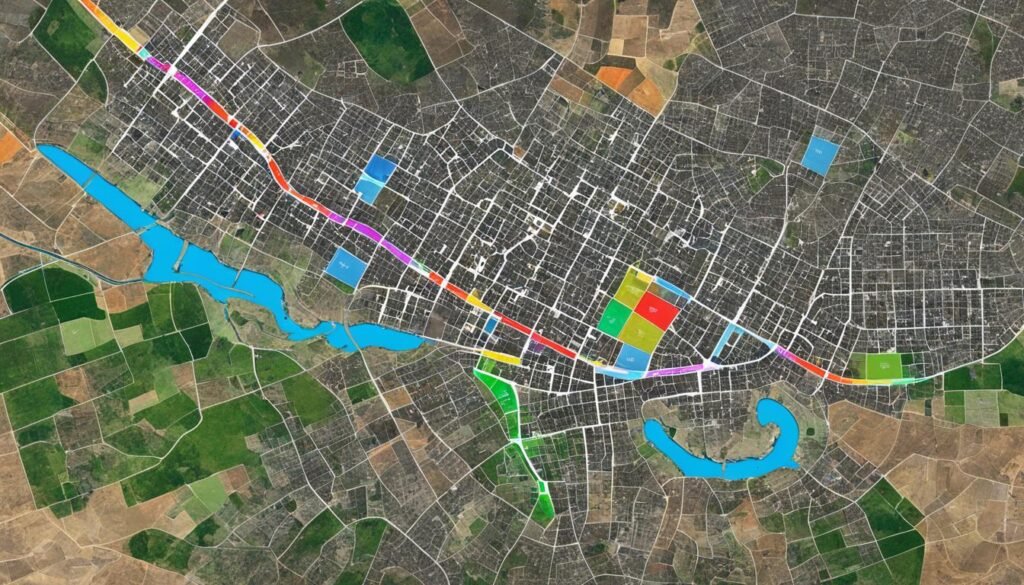California, the Golden State, is facing a range of issues that are impacting its residents and hindering its overall functioning. From housing woes to environmental challenges, let’s delve into some of the major problems that have earned California the reputation of a “failed state”.
California’s housing crisis has reached alarming proportions, with skyrocketing prices and limited availability making it increasingly difficult for residents to find affordable and suitable housing. The state is grappling with environmental challenges such as wildfires, droughts, and air pollution, which are taking a toll on its natural resources and the health of its citizens.
Moreover, the high cost of living, coupled with significant economic inequality, further compounds the state’s difficulties. Infrastructure and transportation issues, including aging roads and public transportation systems, are causing congestion and hindering daily commutes. The education system also faces its fair share of challenges, with many schools lacking adequate funding and resources.
These problems, along with others, have led to a perception of California as a state in crisis. However, through acknowledging and addressing these challenges, California has an opportunity to transform itself and create a better future for all its residents. By exploring potential solutions, the state can work towards overcoming these issues and establishing itself as a thriving and prosperous place to live.
Key Takeaways:
- California is facing a housing crisis, with skyrocketing prices and limited availability.
- The state is grappling with environmental challenges such as wildfires, droughts, and air pollution.
- High cost of living and economic inequality are significant problems in California.
- The state’s infrastructure and transportation systems are in need of repair and improvement.
- The education system faces challenges, including inadequate funding and resource allocation.
Housing Crisis in California
California is currently facing a severe housing crisis, which poses significant difficulties for its residents. The demand for housing in the state surpasses the available supply, driving up prices and making it increasingly challenging for individuals and families to find affordable and suitable homes.
This crisis has resulted in alarming rates of homelessness and overcrowding in many cities across California. It is a pressing issue that affects the lives of people from all walks of life, from low-income families struggling to make ends meet to middle-class individuals who find themselves priced out of the real estate market.
The government is well aware of these challenges and is actively seeking solutions to address this pressing problem. Efforts are being made to promote affordable housing initiatives and implement policies that ensure fair and equitable access to housing for all Californians.
From increasing the housing supply to improving affordability, the state is exploring various avenues to alleviate the impacts of the housing crisis. These solutions include the construction of more affordable housing units, reforming zoning regulations, and providing financial assistance to individuals and families in need.
Improving housing conditions and affordability is crucial not only for the well-being and stability of California’s residents but also for the overall economic growth and prosperity of the state.
The housing crisis in California is undoubtedly one of the most significant challenges the state faces. However, by implementing effective and sustainable solutions, California can create a more inclusive and accessible housing market for all.
Environmental Challenges in California
California is facing a multitude of environmental challenges that are impacting the state’s residents and its overall well-being. From wildfires to droughts and air pollution, these pressing problems require immediate attention and sustainable solutions.
1. Wildfires

California is prone to wildfires, which have become increasingly severe in recent years. Factors such as climate change and forest mismanagement have contributed to the intensification of wildfires, putting lives, homes, and natural landscapes at risk. Efforts to manage forests more effectively and reduce the impact of wildfires are ongoing to protect communities and preserve the state’s natural beauty.
2. Droughts and Water Scarcity
Droughts are a recurring challenge in California, putting a strain on the agricultural industry and water resources. With a growing population and limited water supply, the need for water conservation measures is crucial to ensure a sustainable future. California is implementing various strategies, such as water recycling and efficient irrigation systems, to conserve water and mitigate the effects of droughts.
3. Air Pollution
Air pollution is a significant issue in many urban areas of California, posing serious health risks to residents. Emissions from vehicles, industrial activities, and other sources contribute to poor air quality. The state is actively working towards reducing air pollution by promoting cleaner transportation options and enforcing stricter regulations on emissions.
California recognizes the urgency of addressing these environmental challenges and is taking proactive steps towards sustainability and resilience. By implementing innovative solutions and fostering a culture of environmental stewardship, the state aims to safeguard its natural resources and protect the well-being of its residents.
Economic Inequality and High Cost of Living
Living in California comes with its fair share of challenges, one of which is the high cost of living. The state consistently ranks among the highest in the United States when it comes to the expenses associated with basic necessities. From housing to groceries, many residents find it increasingly difficult to make ends meet.
But it’s not just the cost of living that poses a problem in California. The state also grapples with significant economic inequality. There is a stark contrast between the rich and the poor, with high-income areas coexisting alongside neighborhoods experiencing poverty and limited resources. This wealth disparity exacerbates social and economic challenges faced by many Californians.

The high cost of living and economic disparities create a ripple effect throughout the state. With limited financial resources, access to healthcare, education, and other essential services becomes a struggle for many residents. Additionally, the rising cost of housing further exacerbates the issue, pushing individuals and families towards homelessness or inadequate living conditions.
Income Inequality: A Widening Gap
The wealth gap in California continues to widen, raising concerns about social and economic inequality. While some individuals enjoy the luxuries of affluent areas, others face financial insecurity and limited opportunities. This disparity poses challenges in areas such as education, job prospects, and upward mobility, further exacerbating the cycle of economic inequality.
Affordability Crisis: Rising Expenses
California’s high cost of living extends beyond housing. Expenses such as healthcare, transportation, and childcare also contribute to the financial strain faced by residents. For many, the paycheck simply does not stretch far enough to cover these essentials, leading to increased financial stress and difficulty in making ends meet.
Tackling the Challenges
Addressing economic inequality and the high cost of living in California requires comprehensive solutions. Policymakers and advocates are working towards improving access to affordable housing, expanding economic opportunities, and implementing policies that promote a fair and inclusive economy. By creating a more balanced and affordable living environment, California can alleviate the difficulties faced by its residents and foster a more equitable society.
- Implementing affordable housing initiatives to alleviate the housing crisis
- Expanding access to quality education and job training programs
- Promoting equitable economic policies to reduce wealth disparities
- Investing in social programs and support systems for low-income individuals and families
- Advocating for fair wages and worker protections
While the road to economic equality and affordability may be challenging, California has the opportunity to become a more inclusive and sustainable state by addressing these crucial issues.
Infrastructure and Transportation Issues
When it comes to California, there are a number of pressing concerns that demand attention. One of the key areas of focus is the state’s infrastructure and transportation systems. With an aging infrastructure that includes roads, bridges, and public transportation networks, California finds itself in urgent need of repair and renovation. The current state of disrepair not only poses safety risks but also hampers the overall efficiency of transportation within the state.
Congestion and traffic problems have become commonplace in major cities like Los Angeles and San Francisco, significantly impacting commute times and diminishing the quality of life for residents. The time and productivity lost in traffic jams have adverse effects on both individuals and businesses.
Addressing these infrastructure and transportation issues remains a top priority for the state government. Initiatives are being undertaken to invest in and upgrade California’s transportation systems, improving access, efficiency, and safety for residents and visitors alike.

Through the implementation of modern technologies, sustainable practices, and strategic planning, California aims to alleviate traffic congestion, enhance public transportation options, and create a more efficient and reliable infrastructure network. By doing so, the state aims to improve the overall quality of life for its residents and create more opportunities for economic growth and development.
Education System Challenges
The education system in California faces numerous challenges that hinder the academic success of its students. From inadequate funding to overcrowded classrooms and outdated resources, the difficulties in California’s education system are impacting the quality of education provided to its residents.
One of the major concerns is the persistence of achievement gaps, especially among disadvantaged communities. The disparities in educational outcomes highlight the need for targeted support and resources to ensure equal opportunities for all students, regardless of their background or socioeconomic status.
To address these concerns, the state of California is actively working towards improving access to quality education. Efforts are being made to allocate more funding to schools, particularly those in underserved areas, and reduce class sizes to enhance personalized learning experiences. Additionally, there is a focus on updating educational resources and incorporating modern teaching methodologies to meet the evolving needs of students.
Enhancing the education system in California is crucial not only for the academic growth and success of its students but also for the overall economic development of the state. By investing in education and prioritizing equitable opportunities, California can empower its future generations, foster innovation, and create a skilled workforce that drives the state’s prosperity.
Key Challenges in California’s Education System:
- Inadequate funding for schools
- Overcrowded classrooms
- Limited availability and outdated resources
- Persisting achievement gaps
By addressing these predicaments head-on and implementing innovative solutions, the state of California can pave the way for a more inclusive, accessible, and successful education system that benefits all its residents.
Conclusion
California is currently facing significant challenges across various sectors that are posing a threat to the well-being of its residents and the state as a whole. From the housing crisis to environmental issues, economic inequality, infrastructure problems, and education system concerns, the Golden State is in urgent need of effective solutions.
The housing crisis in California has led to skyrocketing prices and a shortage of affordable housing options, resulting in homelessness and overcrowding. To address this, the government needs to implement sustainable strategies that ensure housing for all Californians.
Additionally, environmental challenges such as wildfires, droughts, and air pollution pose serious threats to the state. California must continue to prioritize sustainability efforts and work towards mitigating these issues to secure a better future for its residents.
Furthermore, economic inequality and the high cost of living are substantial hurdles faced by many Californians. Narrowing the wealth gap and reducing the burden of living expenses require targeted solutions that prioritize equity and affordability.
Infrastructure and transportation issues further impact the quality of life for Californians. Investing in the renovation of aging infrastructure and implementing efficient transportation systems will enhance accessibility and minimize congestion.
Finally, the education system requires attention, as inadequate funding and resource disparities hinder the success of students. By prioritizing education and providing equal access to quality resources, California can empower its future generations to thrive.
In conclusion, addressing the challenges faced in areas such as housing, the environment, the economy, infrastructure, and education is crucial for the well-being and future prosperity of California and its residents. By finding effective solutions and taking decisive action, the Golden State can overcome these obstacles and pave the way towards a brighter and more sustainable future for all.
FAQ
What are some major issues facing California?
California is grappling with a housing crisis, environmental challenges, economic inequality, infrastructure and transportation issues, and education system challenges.
What is the housing crisis in California?
The housing crisis in California refers to the severe shortage of affordable housing, leading to skyrocketing prices, homelessness, and overcrowding.
What are the environmental challenges in California?
California faces challenges such as wildfires, droughts, water scarcity, and air pollution, which have detrimental effects on the state’s ecosystem and residents’ well-being.
What is the economic inequality and high cost of living in California?
California has one of the highest costs of living in the United States, resulting in economic disparities and social challenges among its residents.
What are the infrastructure and transportation issues in California?
California’s aging infrastructure, including roads, bridges, and public transportation systems, requires significant repair and renovation. Congestion and traffic problems also impact the state’s major cities.
What are the challenges in the education system in California?
Inadequate funding, overcrowded classrooms, and achievement gaps are some of the challenges faced by the education system in California, particularly in underserved areas.
How can California address these major issues?
California should prioritize finding effective solutions to provide affordable housing, implement sustainable practices for the environment, reduce economic inequality, improve infrastructure and transportation systems, and enhance the education system to address these challenges.







